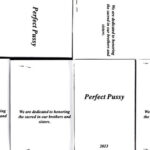As the days shorten and autumn approaches, the melody of “September Song” often comes to mind. This timeless tune, a poignant reflection on love and the passage of time, resonates deeply, especially as we experience the ‘autumn’ of our own lives. It’s a song that speaks of enduring affection and cherishing moments as life progresses.
 Autumn Equinox at Twilight in Vermont
Autumn Equinox at Twilight in Vermont
In my younger years, the historical depth of “September Song” was unknown to me. The song’s melancholic beauty was evident, but its origins and evolution remained a mystery. The journey of this song, from its theatrical beginnings to becoming a beloved standard, is a fascinating tale in itself.
“September Song” first graced the stage in the 1938 Broadway musical “Knickerbocker Holiday.” This production brought together the talents of writer Maxwell Anderson, who penned the book and lyrics, and composer Kurt Weill, who crafted the song’s haunting melody. It was Walter Huston who first introduced the song to the world, performing it in the musical.
Theatrical Roots of a Timeless Classic
 Knickerbocker Holiday poster featuring Walter Huston
Knickerbocker Holiday poster featuring Walter Huston
Walter Huston, primarily recognized as a character actor in films, surprised audiences with his role in “Knickerbocker Holiday.” Huston portrayed Peter Stuyvesant, the historical figure who governed New Amsterdam. In the play, Stuyvesant is depicted as an older, somewhat villainous character, seeking to marry the young heroine for political gain. This portrayal offered a critical lens on power and ambition.
Maxwell Anderson cleverly used Stuyvesant’s character as an allegory for contemporary political concerns, specifically President Franklin D. Roosevelt’s New Deal policies. Some critics of the time viewed the New Deal as an overreach of federal power, drawing parallels to European fascism. This political subtext was woven into the narrative of “Knickerbocker Holiday,” adding layers of meaning to the seemingly simple love song.
Despite being a self-proclaimed mediocre singer, Walter Huston insisted on a solo piece in the musical. This led to the creation of “September Song,” with lyrics that poignantly explore the themes of aging and love across different life stages. The song introduced the concept of a May-December relationship to a wider audience through its evocative words.
The original 1938 recording of Walter Huston singing “September Song” captures the song’s initial interpretation and its connection to the theatrical context.
But it's a long, long while
From May to December
And the days grow short
When you reach September
And I have lost one tooth
And I walk a little lame
And I haven't got time
For the waiting game
And the days turn to gold
As they grow few
September, November
And these few golden days
I'd spend with you
These golden days I'd spend with you
When you meet with a young man early in spring
They court you in song and rhyme
They woo you with words and a clover ring
But if you examine the goods they bring
They have little to offer but the songs they sing
And a plentiful waste of time of day
A plentiful waste of time“Knickerbocker Holiday” was adapted into a film in 1944, but the shifting political landscape led to significant alterations, including the removal of several musical numbers. Huston re-recorded “September Song” on multiple occasions during the 1940s and 50s, further cementing its place in musical history.
From Broadway Stage to a Jazz Standard
By 1946, “September Song” began its journey beyond the Broadway stage as other artists embraced the tune. Frank Sinatra, then 31, released a more romantic rendition that resonated with audiences and brought the song closer to its contemporary popular form.
Frank Sinatra’s 1965 version, featured on his retrospective album “September of My Years,” is perhaps the most widely recognized. By this time, Sinatra himself was 50, symbolically in the “September” of his own life. This version solidified “September Song” as a standard, imbued with a deeper layer of personal reflection from Sinatra, who lived until May 1998. Sinatra’s interpretation captured the bittersweet essence of the song, making it a timeless classic that continues to touch hearts today.

